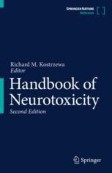Search
Search Results
-
Corticomuscular cross-recurrence analysis reveals between-limb differences in motor control among individuals with ACL reconstruction
Surgical reconstruction of the anterior cruciate ligament (ACL) and subsequent physical therapy can help athletes return to competition; however,...

-
Evaluation of the Effectiveness of Control Using a Brain–Computer Interface in Training to Upper and Lower Limb Motor Imagery
The effectiveness of control using a brain–computer interface (BCI) and the success of motor imagery of the upper and lower limbs was assessed in...
-
Multiple patterns of infant rolling in limb coordination and ground contact pressure
Infants acquire the ability to roll over from the supine to the prone position, which requires body coordination of multiple degrees of freedom under...

-
Patterns of whole-body muscle activations following vertical perturbations during standing and walking
BackgroundFalls commonly occur due to losses of balance associated with vertical body movements (e.g. reacting to uneven ground, street curbs)....

-
The PV2 cluster of parvalbumin neurons in the murine periaqueductal gray: connections and gene expression
The PV2 (Celio 1990), a cluster of parvalbumin-positive neurons located in the ventromedial region of the distal periaqueductal gray (PAG) has not...

-
An Overview of Cortical and Subcortical Anatomy Relevant for Intra-Axial Brain Surgery
The human brain is a magnificent masterpiece whose mystery has not been completely unraveled. The last two decades have seen tremendous advancements...
-
Chemical genetic activation of the cholinergic basal forebrain hippocampal circuit rescues memory loss in Alzheimer’s disease
BackgroundThe degeneration of the cholinergic circuit from the basal forebrain to the hippocampus contributes to memory loss in patients suffering...

-
Influence of age on nicotinic cholinergic regulation of blood flow in rat’s olfactory bulb and neocortex
The olfactory bulb receives cholinergic basal forebrain inputs as does the neocortex. With a focus on nicotinic acetylcholine receptors (nAChRs),...

-
Mechanisms of Development
Many of the mechanisms underlying neural development are basically similar in vertebrates and invertebrates. Among vertebrates, popular species for...
-
Effect of vibration characteristics and vibror arrangement on the tactile perception of the upper arm in healthy subjects and upper limb amputees
BackgroundVibrotactile stimulation is a promising venue in the field of prosthetics to retrain sensory feedback deficits following amputation....

-
Firing rate trajectories of human occipitofrontalis motor units in response to triangular voluntary contraction intensity
During voluntary contractions, limb muscle motor unit (MU) firing rates accelerate over a small force range and saturate in response to increasing...

-
Neuromuscular characteristics of front and back legs in junior fencers
In elite fencers, muscle strength and muscle mass of the front leg (FL) are greater than those of the back leg (BL) due to characteristic...

-
Neurotoxic Effects, Mechanisms, and Outcome of 192 IgG-Saporin Lesions
The first type-selective anti-neuronal active in vivo immunotoxin is the 192 IgG-saporin. 192 IgG-saporin selectively destroys basal forebrain...
-
Parkinson’s disease CA2-CA3 hippocampal atrophy is accompanied by increased cholinergic innervation in patients with normal cognition but not in patients with mild cognitive impairment
Although brain cholinergic denervation has been largely associated with cognitive decline in patients with Parkinson’s disease (PD), new evidence...

-
Effects of Two Exercise Regimes on Patients with Chiari Malformation Type 1: a Randomized Controlled Trial
This study aims to measure the effects of two different exercise programs on neck pain, proprioception, balance, coordination, posture, and quality...

-
The Functional Neuroanatomy of the Limbic System
In this chapter, we will review the anatomical components of the limbic system and its basic functions. The main structures of the brain will be...
-
Time–frequency–space transformer EEG decoding for spinal cord injury
Transformer neural networks based on multi-head self-attention are effective in several fields. To capture brain activity on electroencephalographic...

-
A circuit view of deep brain stimulation in Alzheimer’s disease and the possible mechanisms
Alzheimer’s disease (AD) is characterized by chronic progressive cognitive deterioration frequently accompanied by psychopathological symptoms,...

-
Detection of neuronal OFF periods as low amplitude neural activity segments
BackgroundDuring non-rapid eye movement sleep (NREM), alternating periods of synchronised high (ON period) and low (OFF period) neuronal activity are...

-
Automated Scoring of Sleep and Associated Events
Conventionally, sleepSleeps and associated events are scored visually by trained technologists according to the rules summarized in the American...
